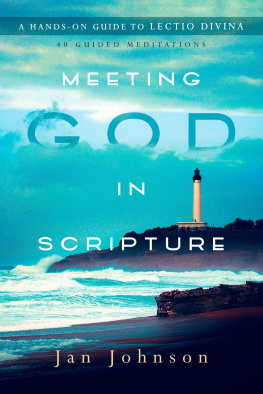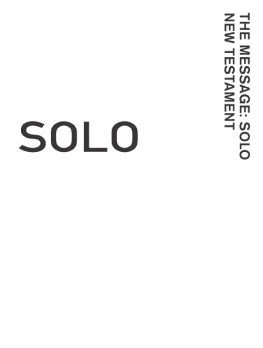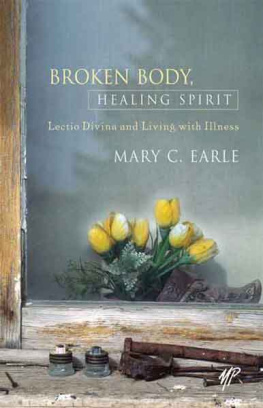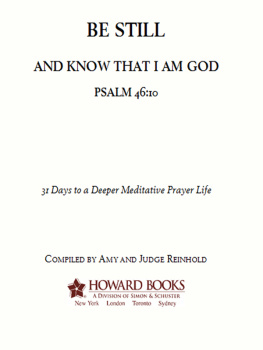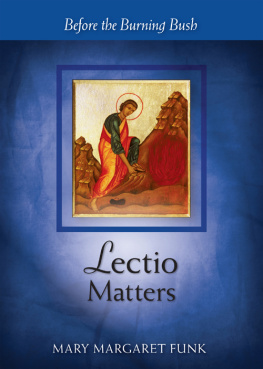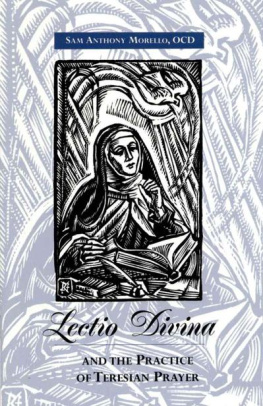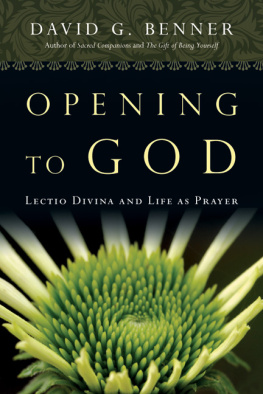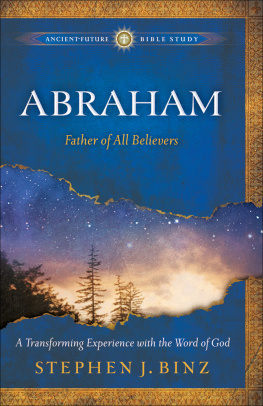MEETING
GOD
IN SCRIPTURE
A HANDS-ON GUIDE TO
LECTIO DIVINA
Jan Johnson
InterVarsity Press
P.O. Box 1400, Downers Grove, IL 60515-1426
ivpress.com
2016 by Janet L. Johnson
All rights reserved. No part of this book may be reproduced in any form without written permission from InterVarsity Press.
InterVarsity Press is the book-publishing division of InterVarsity Christian Fellowship/USA, a movement of students and faculty active on campus at hundreds of universities, colleges and schools of nursing in the United States of America, and a member movement of the International Fellowship of Evangelical Students. For information about local and regional activities, visit intervarsity.org.
All Scripture quotations, unless otherwise indicated, are taken from THE HOLY BIBLE, NEW INTERNATIONAL VERSION, NIV Copyright 1973, 1978, 1984, 2011 by Biblica, Inc. Used by permission. All rights reserved worldwide.
While any stories in this book are true, some names and identifying information may have been changed to protect the privacy of individuals.
Cover design: Cindy Kiple
Images: Christine Amat/Trevillion Images
ISBN 978-0-8308-7331-9 (digital)
ISBN 978-0-8308-4622-1 (print)
This digital document has been produced by Nord Compo.
To the thousands of students and retreat participants
who tried these meditation exercises, met God in the midst
and stunned me with what came to them
Introduction
Ive been leading groups of people in meditating on Scripture for twenty years, helping them enter into the biblical text, notice what resonates with them and then reflect on that. People tell me they get a sense of hearing God speak to them in the group setting, but they struggle to do the same type of study and meditation on their own. The historical and cultural background I provide helps them, and I help them picture details of the scene for narrative passages. People seem to focus better when I ask them questions to guide them through the process of meditation.
This book does all those things, coming alongside to help people interact with the Holy Spirit as they meditate on Scripture passages.
Each session provides
an introductory space of silence to help you relax and refocus, and an optional question or exercise if you need more help in settling in;
the full text of a Scripture passage with explanations of unusual or important words;
meanings of some important words in Hebrew or Greek (including the reference numbers for Strongs Hebrew and Greek Dictionary);
questions to help you enter the text;
questions about what resonates with you in the text, discerning what Gods invitation might be (this is the lectio divina approach: read, reflect, respond, rest);
cultural or historical background as needed;
connections with other Scripture as needed;
cues to help you picture how the story unfolds in narrative passages (an Ignatian approach);
space to respond to God in prayer;
space to prayerfully contemplate the ideas of the passage and the person of God; and
an exercise to try on one of the main ideas of the passage later.
You may wonder whether all these helps might somehow interfere with or obscure what the Spirit is saying to you. I wondered the same thing myself, even though most people find that the helps clarify what the Spirit is saying. So I conferred with others who are well-practiced in leading Scripture meditation. They agreed that many Christians want to do this type of spiritual exercise but need some direction. One colleague urged me to write this book to provide training wheels to help people move into Scripture meditation.
USING THIS BOOK ON YOUR OWN
You may use the forty meditation exercises in this book in any order you wish. They are organized by topic to help you choose the meditations that will best meet your needs. The eight sections address needs that most people experience. For example, I began meditating on Scripture many years ago because I sensed I had a delight deficiency. I did not truly believe that God delighted in me, so I meditated on passages that addressed that issue (see the meditation in this book titled Knowing I Am Loved).
When attempting any spiritual practice, its wise to consider how the Christian community throughout history has done it so that we can learn from them. For example, when you want to study a passage, you might have a look at Bible studies or commentaries that other Christians have written about the passage at different times and places.
At least since the fifth century, one of the primary ways Christians have meditated on Scripture is by reading a passage and then following the Jewish idea of taking hold and keeping Gods words (Proverbs 4:3-4). Christians began calling this process lectio divina, which is a Latin phrase for divine reading or sacred reading (from ecclesiastical Latin, pronounced LEX-ee-oh dih-VEE-nuh). The central idea of lectio divina is invitation. Lectio divina assumes that God is inviting us into interaction and conversation as we read Scripture.
There are four traditional steps in lectio divinaRead (lectio), Reflect (meditatio), Respond (oratio) and Rest (contemplatio). For these meditations Ive added two more: Relax and Refocus (silencio), and Trying It On (incarnatio).
Relax and refocus (silencio). Each exercise begins with brief guidance to slow down, quiet your inner self and let go of distracting thoughts. This is important because most people spend all day responding to stimulianswering the telephone, following schedules and evaluating what needs to be done next. Even when they wake up the first thing they do is check their phone for messages. So when they try to meditate on Scripture, these activities become traffic in their heads that keep them from focusing on God.
A way to interrupt this traffic is to focus on being present in the moment by breathing in and out deeplyeven overbreathing. It also helps to relax our body parts one by one: bending the neck, letting the arms go limp, relaxing the legs and ankles. Loosen each part from the inside out. This doesnt mean youre setting aside your mindyoure redirecting your mind away from the busyness that often consumes you. Being present in the moment prepares you to wait on the still, small voice of God.
If you are distracted, you may want to try the palms up, palms down method. Rest your hands in your lap, placing your hands palms down as a symbol of turning over any concerns you have. If a nagging thought arises, turn your hands palms up as a symbol of your desire to receive If you become distracted at any time during meditation, repeat the exercise.
If you are new to Scripture meditation, a focus question or activity is provided to help you quiet yourself and let go of distractions. As you become more skilled at Scripture meditation you may not need to do this, or you may find that option intrusive, as if the instructions are circumventing something that the Spirit might suggest. In that case, feel free to skip this option.
You may want to develop your own simple relax and refocus practice to use each time. Singing a favorite song may be helpfulespecially a quiet one, such as the old hymn Spirit of the Living God, Fall Fresh on Me. Or you may want to read a good quote, such as this one from Dietrich Bonhoeffer. Say it aloud, slowly.
In our meditation we ponder the chosen text on the strength of the promise that it has something utterly personal to say to us today and for our Christian life.... We read Gods Word as Gods Word for us.

